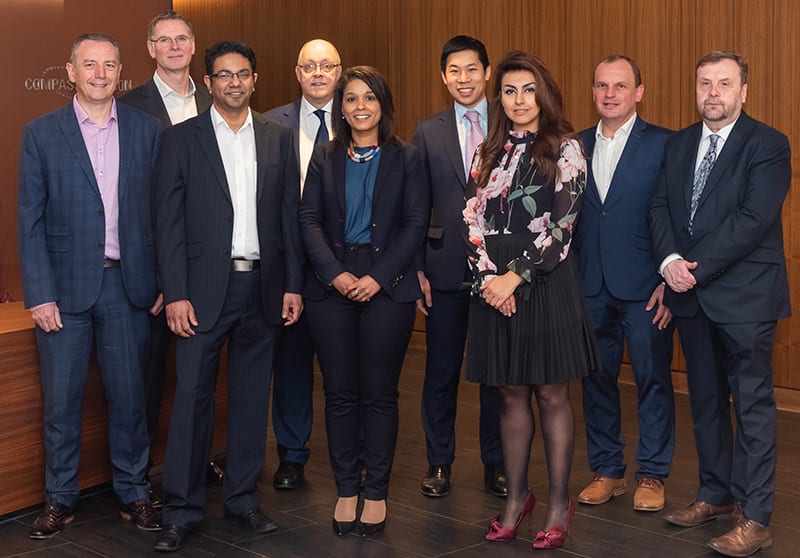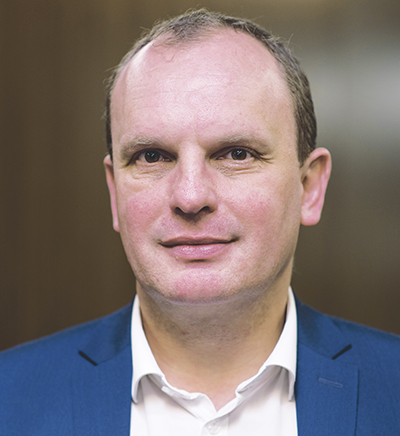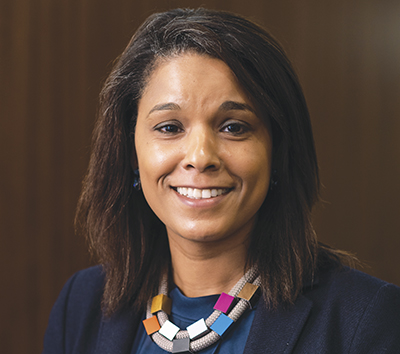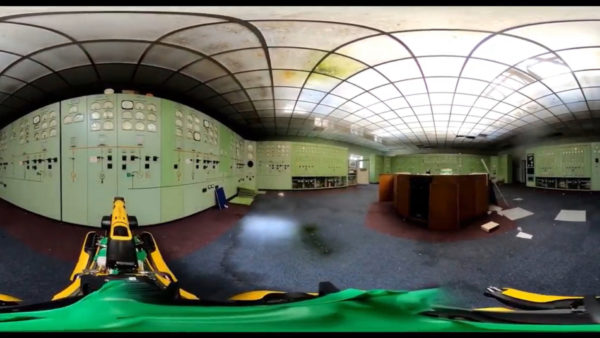With political uncertainty, an accelerating technological landscape and the urgent need to improve quality, there was much to talk about at the BIMplus/Construction Manager annual round table. Denise chevin chaired the debate, held at FTI Consulting’s offices in the City of London, supported by Penningtons Manches. Photography by Andrew Mason.
Denise Chevin: How is the market uncertainty and situation with Brexit impacting on digital transformation and uptake of BIM?
David Jellings: The saying goes that you only know how bad things are when the tide goes out and you can see the holes in the boats, but I think it’s when the tide comes in and those boats sink. In the industry now, the tide is out and people are waiting for it to come back in.
People realise BIM is an integrated business process. The people who provide the data now understand what it is they are providing. More importantly the people who are using it are getting more prescriptive. They want the data clearly defined so they can use it to help business. In addition to the obvious technological benefits, people now see the huge commercial benefit in using data.
Andrew Bellerby: What we see are two streams: the larger contractors who want to improve the processes, and the tail end of the industry which is still struggling to get there. Brexit is making it harder as there is an unwillingness to invest in technology and still a long way to go in educating those people.
Riz Cader: I have a different perspective. We are being asked to optimise our fees, so we are looking at ways to be as efficient as possible. As receiver of the data, we have to engage with those who create it so we can use the data more efficiently – this focuses the innovation on us. It works with some designers but not all, so if we have worked with a designer in the past who understands it, it makes it easier for us. Initially the onus was on the designers – they had to put all the information in, but now we are more aligned.

The panel

Left to right: Andrew Bellerby, managing director, Solibri; Adrian Girling, managing director, UK & Ireland, Graphisoft; Riz Cader, consultant, RLB; David Jellings, managing director UK, BIMObject; Edonis Jesus, BIM leader, consulting, Lendlease; Francis Ho, partner, construction and infrastructure, Penningtons Manches; Dr Sonia Zahiroddiny, BIM strategy manager, HS2; Marek Suchocki, civil infrastructure engagement lead EMEA, Autodesk; Eddie Tuttle, associate director, policy, research and public affairs, CIOB

As everyone assumes there will be a downturn in the market, we are being proactive. Necessity is the mother of innovation, and this is what is pushing us to find alternative solutions.
Edonis Jesus: I don’t believe the transition to a digital industry has been impacted by Brexit or decline in growth in the industry. I think it’s the opposite: it’s accelerating the whole process. My experience is seeing more and more clients requiring methodologies like BIM Level 2 for most projects.
Richard Bates: I agree. We are seeing an increase in the designers understanding more about the data requirement. As far as Brexit goes, we are growing, but at a slower rate. People are expecting a downturn but margins are so low that the smallest thing can cause negativity in a project. People are trying to make things more efficient and squeeze more out of it.
Sonia Zahiroddiny: The impact of Brexit is a lack of resources. People are struggling with resources to put on the right jobs.
DC: So, there is still some way to make digital construction and BIM routine?
Eddie Tuttle: In a huge part of the supply chain BIM is not embedded. It is driven by tier 1, and the government as a client has grasped the nettle and has a number of procurement methodologies. Business needs certainty and the debate about Brexit is all about uncertainty, and it will have an effect on investment in training and new technologies. The crucial role in digital is in how it’s implemented… the quality issue is hanging over the industry.

Sonia Zahiroddiny: People are struggling with resources
Marek Suchocki: I don’t believe the downturn is making any impact other than a positive one – it’s creating demand for change. As a provider we see some businesses can’t see why they’re struggling, but others who are more mature are innovating and changing direction.
Adrian Girling: The larger companies are much further down the digital route than the smaller companies. There is a vanguard but the guys at the back are struggling to get to 3D collaboration.
With Brexit there will be a skills gap because there will be less migration into the UK. We are seeing a lack of BIM managers and those that exist are being bought up by the large companies – taking them from architects and leaving a gap there. At our customers in London 30-50% are EU migrants and that’s slowing down, and it will be a huge issue moving forward. It will slow down the uptake of digital.
Francis Ho: It’s been an interesting 12 months. There is more familiarity with clients – they seem to understand BIM Level 2 and are familiar with the protocol, writing bespoke documents. We haven’t had the same level of enquiry from medium-sized firms. Progress is being made but has slowed down.
DC: What needs to happen to accelerate change?
ET: Brexit could benefit the industry as it will force people to change the way they do business. The industry is working to a model where they appear happy with low margins, which is a big issue.
SZ: I agree. The business models need to change. It needs to be driven by how we procure, so the government needs to drive it. Businesses are looking at a piece of technology and trying to make it work rather than looking at their model and how technology improves the business process. It’s a cultural change. Technology is leading the process rather than the other way around.
MS: The UK has absolutely recognised the inefficiency and acknowledges it needs to fix things; we are the only country that has infrastructure and construction strategies. Elsewhere in the world people do look up to us because of BIM Level 2. As an aspiration to do things differently, it’s a good thing to aim for.
DC: Do you think the uptake of technology improves quality?
ET: Grenfell is not a one-off: the lack of quality in housebuilding raises a number of issues the industry needs to face up to. It needs to focus on competency, with digital as the driver of change – it’s an opportunity for the industry to get itself in order.
SZ: I don’t think digital will improve quality as we are still designing to costs. We are designing to the cheapest possible outcome. It comes back to procurement.
AB: It can improve quality. The challenge is in automating processes for checking models; it’s difficult to write generic checks that can look if a model has the correct data. The large companies are more proactive in checking quality of models but have a retrospective attitude to quality – “we’ll check it if we have to or are told to”. That attitude amazes me; they should be proud.
DC: There are so many advances in technology coming through – which do you think are driving change?
RC: Globally we are seeing if we can use blockchain, especially post contract, to see if it can integrate with models. If the structural engineer changes something the architect drew, tracking that change can be difficult. Lots of companies in the Far East are experimenting with blockchain.

Marek Suchocki: Downturn is creating demand for change
We are also looking at AI and machine learning. The software will learn where certain assets can be placed, and AI will inform us that if you’re trying to build this kind of building, we shouldn’t put x there. It’s part of our strategy to make ourselves more efficient by reducing the number of design iterations.
DJ: We are seeing a similar trend. Using AI is the fastest growing field, using data in real-time environment. Blockchain is needed by the market because it’s how you record what that data has done. It provides an audit tour.
RC: We are also looking at doing fit outs using VR. For example, the kitchen in a house – you have four places you could put the cooker. Some people cannot visualise a drawing, but give them the VR and they walk through the house.
SZ: HS2 will have a digital twin. That’s the aspiration and vision. We have a consortium to provide that platform. It’s very exciting but challenging. Because we are starting with a blank page, so once we start to establish our IUT strategy that’s when we will have the digital twin, enable people to see the asset. The capability is out there – not necessarily from one single company, which is why we have a consortium, but there is an appetite.
DJ: We are using drone technology with the highways agency to see which drains need clearing. On road maintenance that can save 90% of the cost.
MS: We have just launched a component for risk analysis delivering predictive trends as data may show a contractor is about to go bust; and we have used a video of a site to identify hazards for health and safety purposes – it’s a huge growth area for us.
There is also a toolkit to solve the problems we can’t, such as to link linear designs to point designs. It will just snap into the right location. Knowledge-based engineering, where you build retaining walls on a road and as you change the road you change the walls. It stops routine activity and automates it.
DJ: A derivative of that is triangulation. If you want to find where something is located there are programs that do that with business intelligence. We can identify who is downloading what material; other data identifies which projects are being grouped together and where the funding is. It means you can see where the business is, who’s paying for it and where the products are. It will have a huge impact on everything that we are doing in UK construction. This is two to three years away, not blue sky.
How will MMC, DfMA and AI drive the digital agenda?
EJ: There is still a lot of R&D needed. The industry is still exploring MMC and DfMA but in terms of having an actual strategy, how you actually go about it, breaking it down, how you can make both manual and automatic systems work and integrate is harder.
Standardisation of design will become the norm, through a kit of parts or BIM libraries. One will write down what the actual requirements are and then solutions will be produced based on those requirements and various solutions will be compared.

Edonis Jesus: R&D still needed
MS: Maximisation of plots and generalisation of build will increase. With one offsite manufacturer in Holland, we used generative design to develop the plots and let the computer do thousands of iterations to give optimised solutions.
MS: The opportunity is predictability, reducing uncertainty, and having confidence that what the architect designed is buildable. Manufactured elements mean we know what they cost and how they fit together, their time to market and so many factors. We can now look at building the right thing in the right place.
People think that BIM is a cost but if everything is done on site, projects still run late and over budget. More cost up front means less in the long run.
DC: Where will DfMA and AI go? Is it going to make people redundant?
AB: I don’t think so. You can’t automate building codes at the moment. If they are tightened up you can look at how you bring in AI, but we are quite a long way from that.
DC: One global consulting firm was talking about resourcing an overseas project. Whereas typically they would require six people, now they would just require two. Automation has cut the staff required to undertake the same work.
AB: Yes, but perhaps it fills the skills gap, it changes roles rather than making people redundant. Roles are blurred. It’s an opportunity not a threat.
AG: Innovation is about creating efficiencies, enabling a practice to have 10 architects instead of 15, but it doesn’t stop the number of jobs – it just means the roles change. New jobs are being created, so instead of a CAD manager you have a drone manager or a robot manager. Jobs are different today than a generation ago, yet we have full employment.
DJ: We are focusing here on design but go back to manufacturing and not far in the future lies robotic assembly.
SZ: We are a long way from robotics being used in the public sector; it requires standardisation and an integrated way of working, so until we get that we can’t use it on bigger infrastructure projects.
We are seeing roles being replaced with tech savvy, data-driven people coming into the industry who know how to do process mapping and process engineering. We need that, otherwise we go backwards.
RB: More and more architects are producing more options, which in turn is making us more reactive rather than proactive, as things are turned around faster. We used to receive 2D up to RIBA stage three but now designers are a lot savvier with technology, so we are receiving models at the feasibility stage which we never had before.
It puts pressure on our ability and time and space for dealing with it. We are also moving onto smart contracts. It’s a computer-based “if this, then that” type approach.
FH: I’ve seen that mixed with blockchain, for example, if the KPI is met then you’re paid automatically – that’s how smart contracts can work. AI is fascinating: you can feed it information with different clauses and contracts and it can pull them out and compare them. A human has to then look at them, but it does reduce the amount of time you spend, especially for consultants, and that saves costs.
If you had to choose only one, which technology would you bet on for having the maximum impact on change in the future?
SZ: Digital twin.
DJ: Assembly of buildings.
EJ: Analytics. Using data to make informed decisions.
RB: Assembly on site and environmental impact – the just-in-time aspect, so not repeatedly moving things.
AB: Assembly of buildings.
ET: Assembly, the role of the insurance industry and new arrivals to market.
FH: Offsite manufacturing, although the finance models are vastly different so need investment and throughput of orders. But in the short term, machine learning, as the cost is more accessible.
AG: 3D printing has huge potential. And security of data will be a big issue.
MS: The digital constructor: the worker and the organisation.
RC: Machine learning.













